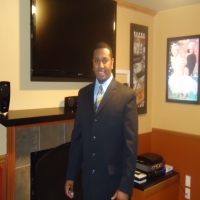Weeks Bay Foundation hopes to protect Alabama's un
Post# of 17862

Weeks Bay Foundation hopes to protect Alabama's underwater forest
Email the author | Follow on Twitter
on July 17, 2013 at 5:39 PM, updated July 17, 2013 at 6:05 PM
The Weeks Bay Foundation has launched a campaign to permanently protect Alabama’s underwater forest by creating a marine protected zone around it.
At the suggestion of its executive director, Ben Raines, the foundation board, which has a long history of successfully protecting coastal Alabama on land, decided to take that experience and apply it under water.
“We’re stepping up and protecting coastal Alabama above and below the water. There’s no other organization doing that. The board believed it was a good time for us to step into that gap nobody else was filling,” Raines said.
“We envision a protected area where fishing and scuba diving are allowed. The only thing that will be prohibited is removing wood from the site. Once we have the protection in place, we’ll release the GPS coordinates to the public so people can fish and dive in the area.”
Raines said the necessity of protecting the primeval forest became a priority after a recent string of events revealed it to the world.
The forest has been the closely guarded secret of a handful of Alabama divers ever since an offshore fisherman enlisted one of them to explore structures that showed up on his bottom machine shortly after large waves generated by Hurricane Katrina scoured the Gulf’s mud/sand bottom in August 2005.
The scouring action likely uncovered the forest.
As the then-environmental reporter for Mobile’s Press-Register newspaper and certified SCUBA diver, Raines brought its existence to the public’s attention in August 2012. He obtained closely guarded GPS coordinates to its location and wrote stories and published pictures and videos chronicling dives he made to explore the forest.
Each time one of the stories appeared in the newspaper and on its AL.com website, they generated unprecedented local interest and comment.
The forest gained unexpected national and international attention last week when a writer from an online-based magazine called LiveScience contacted Raines and asked if she could use his stories and some new information from him as the basis for a story about the forest.
As soon as the story hit the LiveScience Web site, it was shared, Tweeted, Facebooked and linked by national newspapers and magazines plus local and national radio and television networks. Some of the dozens of calls Raines received within hours of the story hitting the Internet came from other continents.
As expected, lots of calls came from divers, obviously intrigued by the chance to experience what Raines describes as “an enchanted, Fantasia-like place.”
Unexpectedly, he also got calls from salvage companies wanting to remove the cypress stumps and logs that scientists have aged at 50,000 years old or older. Raines realized those calls meant the forest and natural marine ecosystem it now supports could be imperiled if the forest’s location were somehow revealed.
“Some of the salvage companies even offered me money for the (GPS) numbers for the forest,” Raines said. “Those stumps would rank among the rarest and most valuable pieces of wood on the planet. I can’t imagine what the value of a Gibson guitar or even a coffee table made from a 50,000-year-old tree would be?”
Raines said the Weeks Bay Foundation board eagerly accepted the challenge of trying to protect the forest even though scientists said that with it uncovered, decomposition could destroy it within two years.
“I suggested to the board that no one is looking out for the forest right now. The only thing that is protecting it is me keeping my mouth shut. Other people know where it is and I think the board understands that we need to protect it before we see a salvage boat out there,” Raines said."While the forest is ephemeral, we don't believe the natural marine environment that exists out there now should be allowed to be destroyed."
He also sees opportunity to give people who don’t dive a taste of the forest by possibly extracting several of the cypress logs and putting them on public display at places as far-flung as the Smithsonian Institution in Washington, D.C., to the Dauphin Island Sea Lab to the Aquarium of the Americas in New Orleans.
Raines said the foundation plans to reach out to members of congress and scientists and is encouraging the public to get on board with the project.
“People make fun of me when I call it a fairy world, but it really is. It shouldn’t be there, but there it is with these 50,000-year-old trees coated in anemones and swarming with fish,” Raines said. “It’s just a neat place. We hope the public will get on board with us to help protect it.”
Click here to go to the foundation’s website where it is accepting donations to help cover costs associated with protecting the underwater forest.
 (0)
(0) (0)
(0)